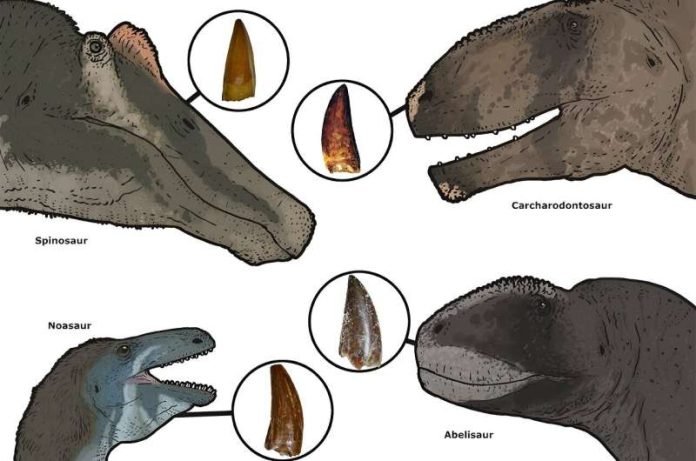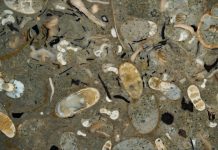
An international team of scientists has made an exciting breakthrough in the field of paleontology by using a combination of old and new methods to study the diverse species of carnivorous dinosaurs that once lived in the Kem Kem beds of Morocco, a site that dates back to the Cretaceous period, around 100 million years ago.
This innovative approach combined traditional phylogenetic analysis with modern techniques like discriminant analysis and machine learning, focusing on a collection of isolated dinosaur teeth, a common find in an area where dinosaur bones are rarely preserved.
The Kem Kem beds are renowned for their fossilized remains, which often include teeth from well-known dinosaurs like Spinosaurus and Carcharodontosaurus, made famous by the Jurassic Park movies.
However, alongside these identifiable fossils, researchers have also found what they dubbed ‘mystery teeth,’ previously thought to belong to the dromaeosaurid family, known for the Velociraptor.
Led by Simon Wills, a scientific associate at the Natural History Museum, the research team applied machine learning to identify these theropod teeth, unveiling new insights into the dinosaur ecosystem of the Kem Kem region.
The integration of machine learning with traditional paleontological methods allowed for a more accurate identification of these specimens, revealing species previously unknown in this area.
The study revealed that the mystery teeth did not belong to dromaeosaurids as initially thought.
Instead, they were identified as belonging to two distinct dinosaur families: the Abelisauridae, distant cousins of the Tyrannosaurus rex characterized by large heads and tiny arms, and the Noasauridae, a group very rare in Morocco.
This identification of noasaurids in the Kem Kem beds is particularly notable given the limited evidence of their presence in the area prior to this study.
Dr. Femke Holwerda of Utrecht University highlighted the significance of this discovery, noting that these teeth had been in museum collections for decades before the new techniques brought them to life again.
This not only confirms the presence of noasaurids in the Kem Kem but also showcases the potential of combining traditional and modern analytical methods to uncover new insights into well-studied regions.
The Kem Kem beds, located on the border between Morocco and Algeria, represent one of the few places in the world where a relatively complete Early Cretaceous dinosaur-dominated ecosystem is preserved.
The area was home to a diverse range of species, including various theropods, sauropods, and other herbivores, thriving in a riverine ecosystem that supported numerous carnivorous animals.
This research, published in the Journal of Vertebrate Paleontology, not only sheds new light on the diversity of dinosaur species in the Kem Kem beds but also demonstrates the power of machine learning and other modern techniques to advance our understanding of paleodiversity and ancient ecosystems.
As the datasets grow, these methods promise to reveal even more about the life that once inhabited our planet, even from the smallest of remains.
The research findings can be found in the Journal of Vertebrate Paleontology.
Copyright © 2024 Knowridge Science Report. All rights reserved.



